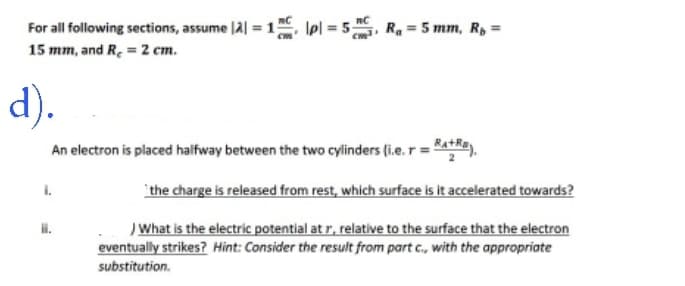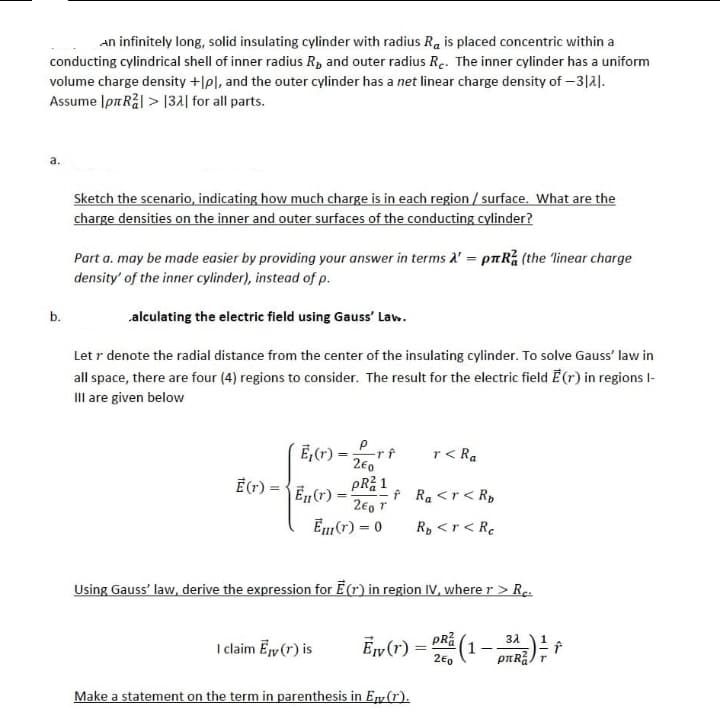An electron is placed halfway between the two cylinders (i.e. r = +). the charge is released from rest, which surface is it accelerated towards? ) What is the electric potential at r, relative to the surface that the electron eventually strikes? Hint: Consider the result from part c., with the appropriate substitution.
An electron is placed halfway between the two cylinders (i.e. r = +). the charge is released from rest, which surface is it accelerated towards? ) What is the electric potential at r, relative to the surface that the electron eventually strikes? Hint: Consider the result from part c., with the appropriate substitution.
Related questions
Question
Just do part d

Transcribed Image Text:For all following sections, assume |2| = 1 pl = 5₁, R₁ = 5 mm, Rp =
15 mm, and R₂ = 2 cm.
d).
An electron is placed halfway between the two cylinders (i.e. r = +).
ii.
the charge is released from rest, which surface is it accelerated towards?
) What is the electric potential at r, relative to the surface that the electron
eventually strikes? Hint: Consider the result from part c., with the appropriate
substitution.

Transcribed Image Text:An infinitely long, solid insulating cylinder with radius Ra is placed concentric within a
conducting cylindrical shell of inner radius R, and outer radius Re. The inner cylinder has a uniform
volume charge density +[pl, and the outer cylinder has a net linear charge density of -3121.
Assume Ip Rål> 132 for all parts.
a.
b.
Sketch the scenario, indicating how much charge is in each region / surface. What are the
charge densities on the inner and outer surfaces of the conducting cylinder?
Part a. may be made easier by providing your answer in terms A' = pлR (the 'linear charge
density' of the inner cylinder), instead of p.
alculating the electric field using Gauss' Law.
Let r denote the radial distance from the center of the insulating cylinder. To solve Gauss' law in
all space, there are four (4) regions to consider. The result for the electric field E(r) in regions l-
III are given below
Ē(r) =
E₁(r) = -rf
2€0
PR²1
En (r) =
201
Em (r) = 0
f
I claim Ey (r) is
r< Ra
Using Gauss' law, derive the expression for E(r) in region IV, where r > Rc.
Ra <r < Rp
Rp <r < Re
Make a statement on the term in parenthesis in En (r).
3λ
Ev (1) = ² (1 - 0222) f
2E0
r
Expert Solution
This question has been solved!
Explore an expertly crafted, step-by-step solution for a thorough understanding of key concepts.
This is a popular solution!
Trending now
This is a popular solution!
Step by step
Solved in 2 steps with 4 images
